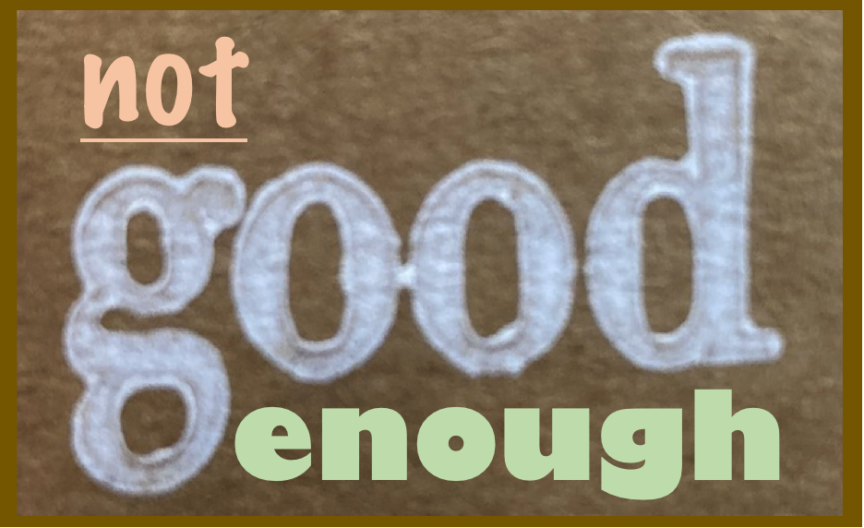Like a lot of people during quarantine, I have been organizing, and cleaning. Replacing the old and removing the clutter. My biggest task has been bedding. Pillows to be exact. In looking to replace the 3 bedrooms worth of pillows it was hard to find ones that everyone would be comfortable with because each picky person in my household likes a different form of firm or fluffy.
Luckily, I found a company, Fern and Willow, which allows the down-alternative fill to be removed a bit at a time to adjust the firmness of each pillow. But this article is not about the pillows, it’s about the packaging used to deliver them – how it was created and how it could have been created using inkjet.
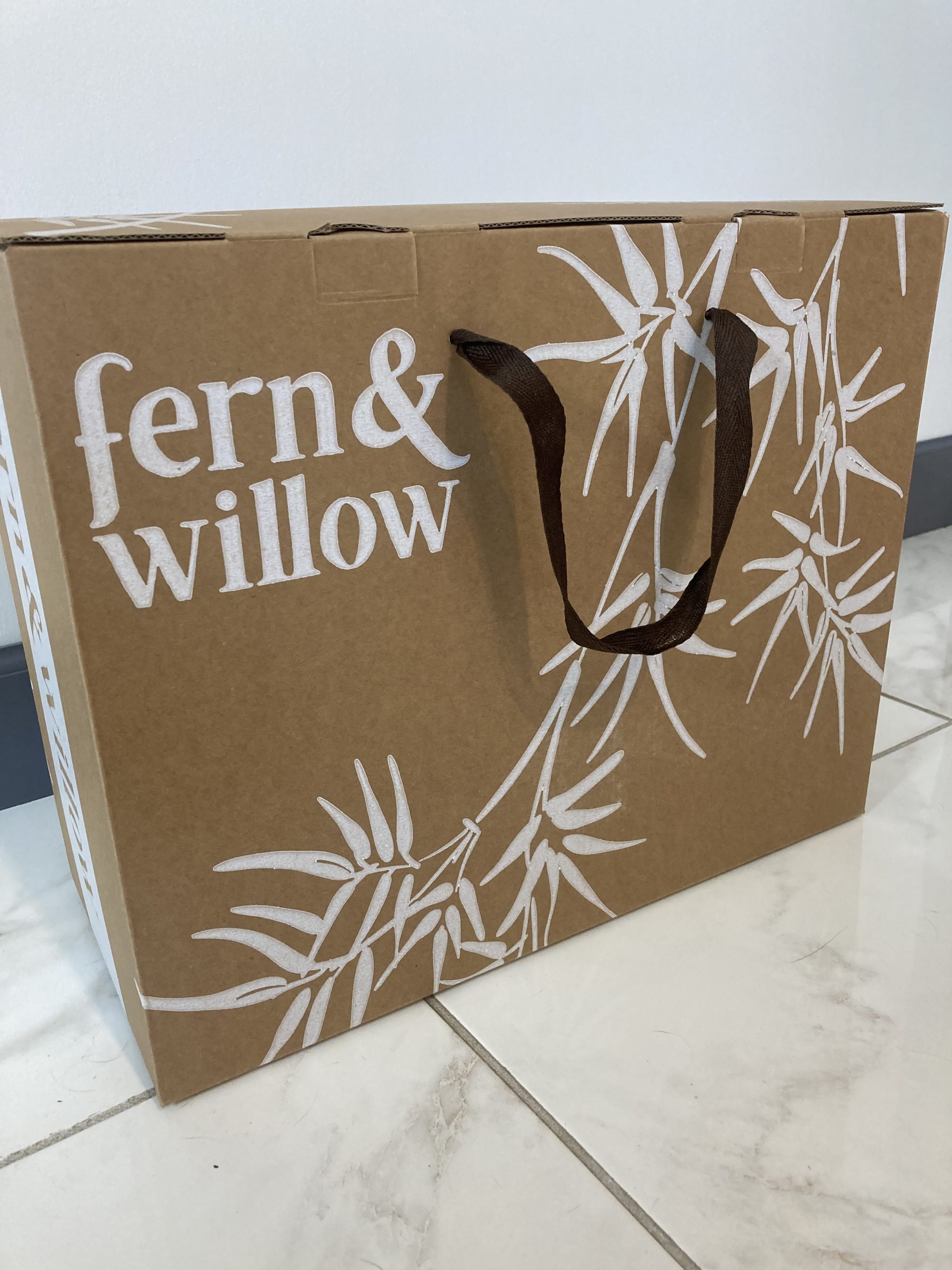
On the outer packaging containing the pillows, I noticed the printed white ink on a kraft liner. Of course, I switched hats back to my packaging days and started to evaluate the package and printing. I noticed some interesting things about the structure of the packaging and the printing on the structure.
The Box Structure
Upon breaking down the box, I noticed it is a simple e-flute kraft top and bottom liner with a die cut tuck-top with a die cut 123 bottom, simple enough. It has a brown ribbon handle giving a nice contrast effect. The box was well structured, but that’s not what caught my attention. It was the printing.
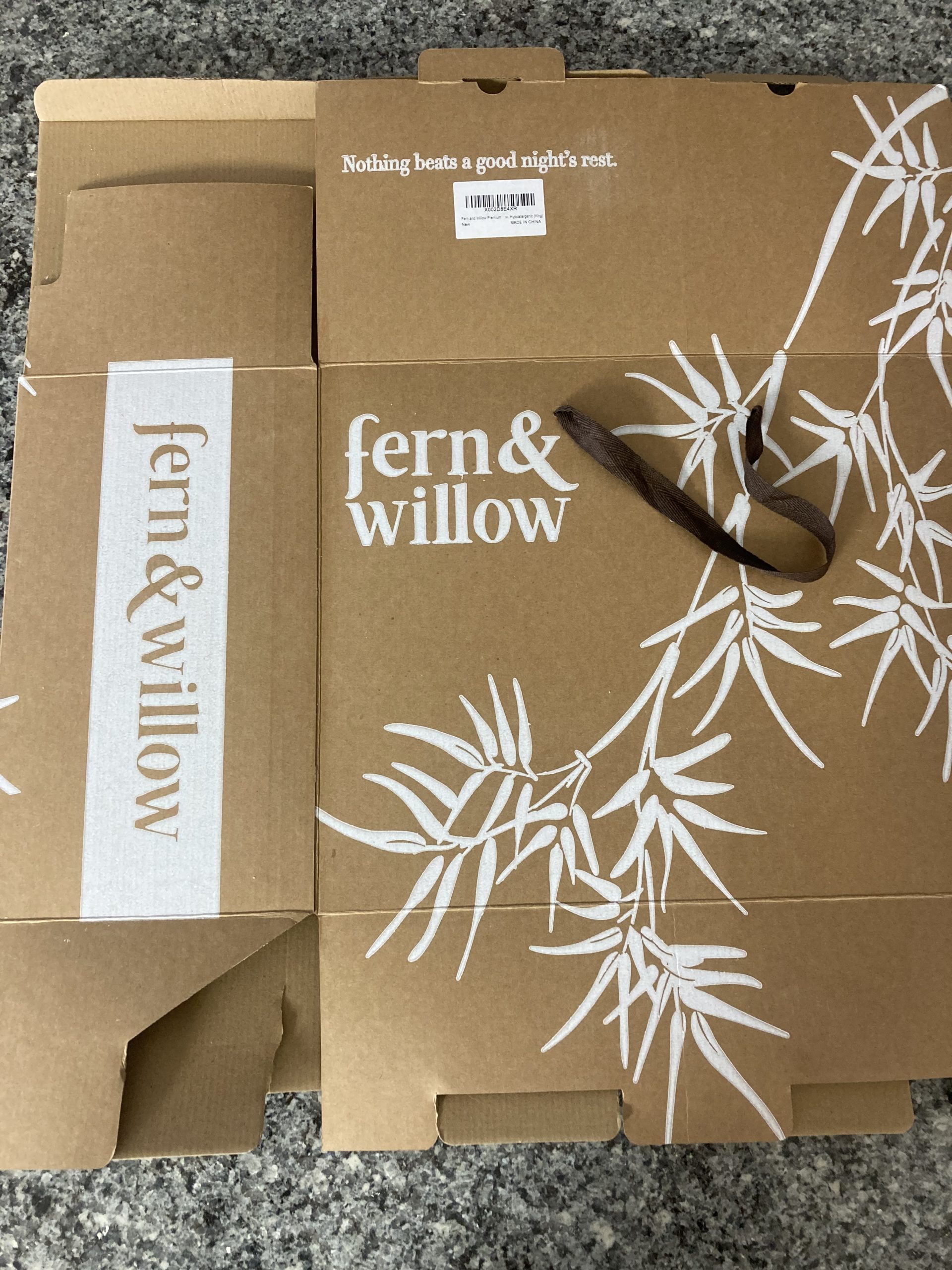
The Printing
I worked in the flexographic industry for over a decade and there are specific areas of the print quality which are clear signs of its application. It was obvious that the white ink used for the graphics on the pillow box was a flexographic post print application using photopolymer plates.
For those who are not familiar, post print (otherwise known as direct print) is when printing is applied to the packaging surface once the corrugated sheet or die cut structure is formed. Flexographic printing plates are like the name suggest “flexible” and used to transfer ink to a relative flexible substrate, such as paper, film or corrugated material. Plates are made to be flexible, so they wrap around cylinders on a flexographic press.
These printing plates are designed with a relief, which means the print surface is raised where the image has been exposed. This creates tiny, raised areas which hold the ink to be transferred. But these tiny flexible areas can cause issues in print quality when applying ink to the corrugated material when increasing plate impression.
“Impression” that Leaves an Impression
Since the plate is flexible, so is the raised print surface. The pressure which the plate applies to the media is critical to the print quality. For direct print packaging, if the plate is applied to the corrugated media with too much pressure, you will start to see an uneven application as well as the relief of the plate showing in the image. Imagine a rubber stamp, if you apply light pressure the print can have voids, too much pressure and you will see the image spread and edge to edge clarity lessened.
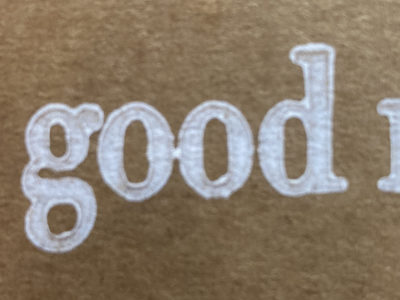
When good is not so good
The pressure of the plate should be normalized according to the flexibility and the hills and valleys of the corrugated flute. For the pillow corrugated sample and E-flute is very small and compressed which eliminates the hills and valleys you would see in C-flute so the plate pressure should be quite even. But for the samples shown, uneven plate pressure was applied leaving a less than impressed impression of the packaging.
Inkjet is Perfect for Direct Print
In the 1990’s, I worked with a group of talented engineers designing direct to corrugated inkjet called JetPac. This technology was way ahead of its time. This inkjet approach eliminated print quality issues found in direct print flexographic and screen applications. Since then, innovations in inkjet technology have opened up options for various ink chemistries such as primers, water-based and UV, creating single-pass direct print solutions..
Integrating inkjet into packaging eliminates the need for print plate consumables offering an on demand variable solution of small run and variable messaging and branding, creating packaging which now not just holds or protects the product, but speaks directly to the consumer. For designers, inkjet has allowed easier prototyping of true printed packaging and not just a mounted mockup from a wide format printer adhered to corrugated.
Post Corrugation Printing
Inkjet for direct print is being integrated into the box making workflow for existing corrugated packaging plants. Digital Print, Inc (DPi) inkjet solutions, out of Cresson Texas, has designed a system using water based or UV inks, which can be retrofitted to the wet-end web or constructed-end of a corrugator, RSC folder/gluers, rotary or flatbed D/C and many others with multiple digital print bars.
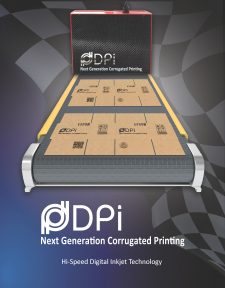
DPI offers retrofitted options for corrugators and finishing systems
Print from Inventory
Not producing the corrugated material in house? Well, there is an inkjet solution for that. Domino, HP and EFI, to name a few, have designed systems utilizing compatible ink chemistry options (dependent on media) and configurations that has created ways traditional printers can expand their businesses into direct print. These manufactures have created inkjet print solutions engineered for everyday corrugated print production for unlimited SKU, image, and personalization on the fly.
Commanding a large footprint, these presses are offered with the varied ink channels. From CMYK to CMYK+ and white options, they are offered in either aqueous or UV ink to print direct to corrugated flat or KD (knock down) die cut or non-die cut finished fluted or folding carton stock (ink chemistry dependent on packaging media and press type).
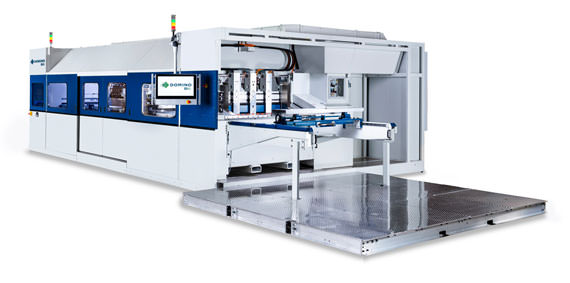
Domino X630i Package Printer
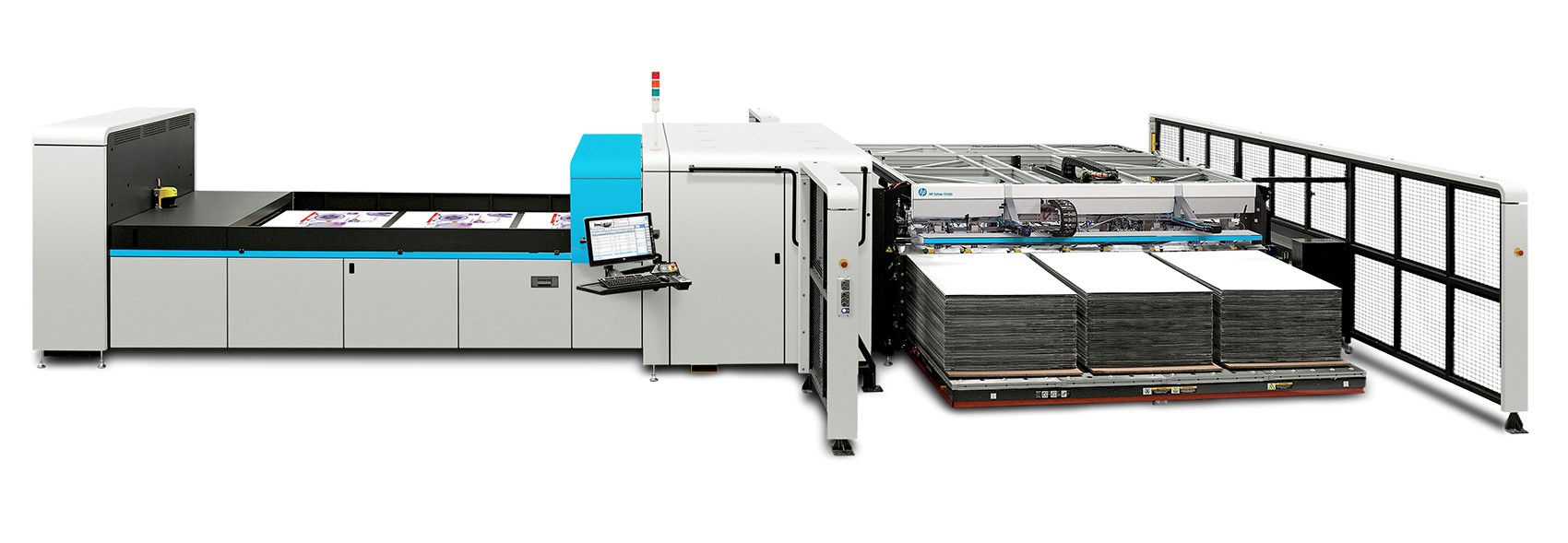
HP Scitex 17000 Corrugated Press
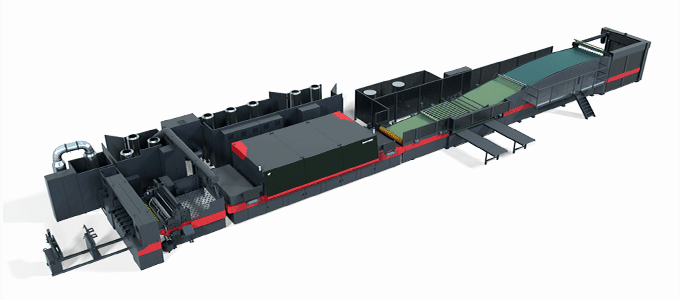
EFI Nozomi C18000 Plus
Impress without an Impression
As now you know, in package printing, impression is not just an idea, feeling or an opinion of something, but also an impression which causes the impression. For brands who tediously design for a particular look and feel and wish to create a great first impression of the product contained, inkjet packaging printers are awaiting your next print project.
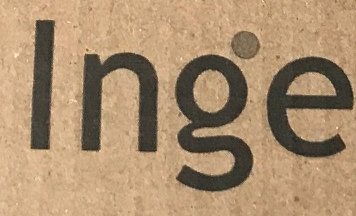
Print clarity from direct to corrugated inkjet printing
As for the pillows, I asked myself, if they were not shipped to my door and on a store shelf, would I have bought this brand by the quality of the print? Like many other consumers, probably not. It’s a shame because the pillows are fantastic and impressed everyone in my household, so I am glad they came to my door and didn’t have to rely on first impressions.
So, remember… To print to impress, lose the impression.

